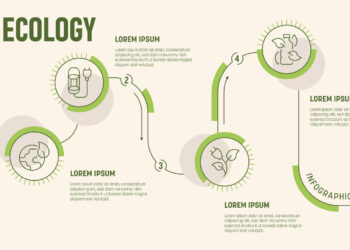
While researching a post recently, I came across an article containing a strange footnote, which read:
The publication costs of this article were defrayed in part by page charge payments. This article must hereby be marked “advertisement” in accordance with 18 U.S.C. §1734 solely to indicate this fact.
The publication was the Proceedings of the National Academies of Science, and the year it was published was 1999. I looked up US Code §1734, and it reads:
Whoever, being an editor or publisher, prints in a publication entered as second class mail, editorial or other reading matter for which he has been paid or promised a valuable consideration, without plainly marking the same “advertisement” shall be fined under this title.
The logic at work here seems to be that because the publisher or editor was paid — in the form of page charges — to publish an article, the article was therefore an advertisement. It’s an interesting interpretation, but ultimately a puzzling one, and news to me.
After asking around a bit via email, I found out that a number of other publications had carried a similar bit of wording in response to this subsection of the US Code and the postmaster’s interpretation of it.
There was actually a larger controversy driving the interpretation. There were differential second-class postal rates in the 1970s and 1980s, with commercial publishers paying a higher rate while non-profit publishers enjoyed lower rates. The commercial publishers lobbied against this, saying it gave non-profit publishers an unfair advantage. They ultimately turned to the argument that page charges constituted paid pages — i.e., advertising. Some publishers fought this interpretation, while others capitulated and included the statement.
Due to some inertia, the disclaimer text persisted far longer than necessary, remaining part of articles utilizing page charges well into the late 1990s or early 2000s. It was something habitually included in articles that were published after incurring page charges, and few questioned why the statement was attached. Ultimately, it became clear to all that it was a vestige from a bygone era, and was removed.
The relevant subsection of the US Code has only been modified once, in 1994, when the maximum fine of $500 was replaced with a more open-ended statement conclusion allowing an unlimited fine.
We are now in another era in which editors and publishers are encouraged to have their costs defrayed by payments or valuable consideration from authors. In that light, this little bit of history takes on a peculiar cast, which is only enhanced when you contemplate that the text is toothless unless second-class postage is involved, making it moot for online-only publications.
Are scientific papers advertisements? The economic model in our current publish-or-perish economy would assert that they have more in common with advertising than we might like to admit. As economist Paula Stephan said last year in an interview:
In the current environment, it is rational for scientists to pay for publication, especially since the costs are often absorbed by a funding agency.
Who is advertising is worth considering, as well. With funders wanting more “outcomes” (i.e., publication events) and the government wanting the same, it seems authors and funders are aligned here. Our publish-or-perish culture has certainly created some unintended consequences.
Are papers marketing? A study of funding sources for open access (OA) articles in 2010 concluded that:
Our results show that author-paid open access publishing preferentially increases accessibility to studies funded by industry. This could favour dissemination of pro-industry results.
Corporations are also funding more OA authors and articles, and when asked to provide information to readers about who is paying APCs, BioMed Central’s publishing director told me directly that she felt no reason to do this.
In an email from a colleague this year, I learned that some OA journals are being started in medicine as part of a sophisticated direct-to-consumer marketing approach — that is, placing papers in a publicly accessible OA journal, then selling the products that the studies support. This is not far from the Elsevier “fake journals” scandal, but is viewed by some as comparatively legitimate. Let’s call this “direct-to-consumer journal funding.”
However, unless we start printing and mailing again, or US Code §1734 is modified for only the second time in its history, it seems that at least as far as the US government is concerned, scientific articles are not legally considered advertisements — despite increasing evidence that they run the gamut from marketing to advertising, with corporate, professional, and academic interests commingling.
But a larger question remains — Are we entering another, and perhaps less well-controlled “articles as advertising” era?
(Thanks to JP, RD, JS, and NR for their help in recovering this little bit of history.)
Discussion
7 Thoughts on "History as Caution — When Paid Scientific Articles Were Legally Considered "Advertisements""
In an email from a colleague this year, I learned that some OA journals are being started in medicine as part of a sophisticated direct-to-consumer marketing approach — that is, placing papers in a publicly accessible OA journal, then selling the products that the studies support.
Kent, this seems worthy of further investigation. Is there more info available?
So, I went back to my source. The journal is the Journal of Rare Disorders (http://www.journalofraredisorders.com/), and the publisher is the Scientific Communications Group. It started publishing in April 2013, and has published two issues.
SCG does publication planning, newsletters, product theaters, and other things for pharmaceutical companies. They are also affiliated with Hudson Horizons (http://www.hudsonhorizons.com/), an integrated online advertising company with healthcare and non-healthcare clientele.
On another comment thread, there’s a British publisher defending PMC and eLife, but this publisher has a confusing corporate profile as part non-profit and part for-profit.
We’ve all heard about “predatory” OA publishers. Maybe we have other opportunists who are more subtle than those just propping up quick OA storefronts to squeeze some cash out of the unsuspecting. Maybe we have some more sophisticated approaches to exploiting OA — by making free publications supporting paid products; by using OA as a non-profit gambit for a for-profit company.
Very interesting times, and a testament to lowered barriers to entry, which seem to be the common denominator for all the dysfunction.
Makes me wonder if someone should ask Jeffrey Beall to establish a corollary to his Predatory Publishers list — something like a Sock-Puppet Publishers list or a Corporate Shill Publishers list.
Not a bad idea Rick. Journals started becoming leery of papers that were obviously an ad for pharma or a device maker and presumably these are either harder to get published, or require so much work to make them not look like an add that it’s not worth it. I have been known to say: “Don’t like journal policies, start your own journal.” Seems they may have done this here. If they are clear on where the money comes from, I have a hard time imposing our way on them just because they call it a journal.
Of course, this is not a problem exclusive to the Open Access movement. I tried to find some evidence for the efficacy of triclosan in toothpaste recently and was distressed to discover the Journal of Clinical Dentistry, which has been around for years, is PubMed-indexed, and is explicitly a marketing tool for industry: http://www.jclindent.com/FromThePublisher.html



